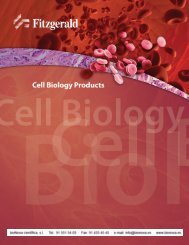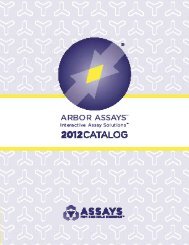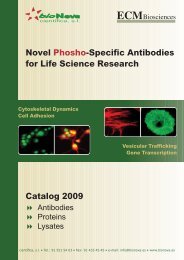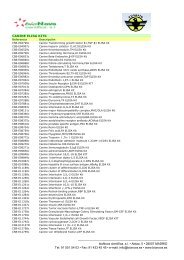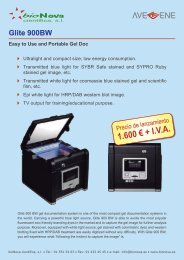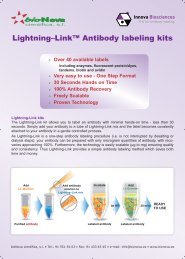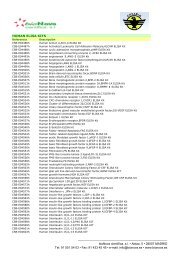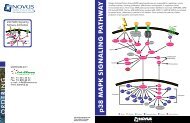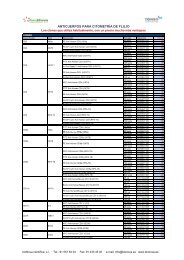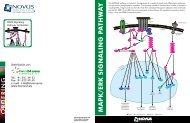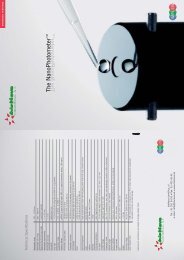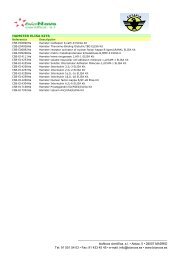DNA & RNA TRANSFECTION REAGENTS - BioNova
DNA & RNA TRANSFECTION REAGENTS - BioNova
DNA & RNA TRANSFECTION REAGENTS - BioNova
You also want an ePaper? Increase the reach of your titles
YUMPU automatically turns print PDFs into web optimized ePapers that Google loves.
Plasmid Transfection: Broad Spectrum & Cell Line Specific<br />
Plasmid transfection into mammalian cells is a crucial step in many experiements and requires<br />
transfection reagents that deliver plasmids without perturbing cell physiology. To<br />
meet these needs, Mirus Bio developed two different types of plasmid transfection reagents.<br />
TransIT ® -LT1 Reagent is a broad spectrum plasmid transfection reagent that enables high efficiency<br />
transfection into a wide variety of cells. The other TransIT Cell Line Specific Reagents<br />
are optimized to produce increased transfection efficiency compared to TransIT-LT1 Reagent in<br />
popular or hard-to-transfect cell lines.<br />
Benefits of the TransIT Transfection Reagents Include:<br />
Ease-of-Use: Simple protocols with easy optimization mean you spend less time optimizing<br />
and more time doing the important experiments.<br />
Low Cellular Toxicity: Maintains healthy cell density while reducing potential experimental<br />
biases due to toxicity.<br />
High Efficiency Transfection: High percentage of the cells expressing transfected plasmid ensures<br />
experimental success.<br />
Transfects Single or Multiple Plasmids: Enables use of reagents in a variety of applications including<br />
viral production, transcriptional regulation, and si<strong>RNA</strong>/sh<strong>RNA</strong> expression.<br />
Easy-to-Use and Serum Compatible<br />
1. Dilute TransIT ®<br />
Transfection<br />
Reagent in serumfree<br />
media, mix<br />
Protocol Overview for TransIT Transfection Reagents. TransIT Transfection Kits contain two components and require<br />
an additional mixing step when using these kits.<br />
Low Cellular Toxicity<br />
2. Add purified<br />
nucleic acid,<br />
mix and incubate.<br />
3. Add complexes<br />
directly to cells<br />
in serum<br />
containing media.<br />
4. Incubate.<br />
and incubate. 24-48 hours Perform<br />
Assay<br />
Comparative Toxicity of TransIT-LT1 Transfection<br />
Reagent and Another Leading<br />
Transfection Reagent in COS-7 Cells. In<br />
a transfection experiment, cells that are<br />
rounding up and peeling off the surface of<br />
the plate characterize cellular toxicity. The<br />
photos compare toxicity among nontransfected<br />
cells, cells transfected with<br />
Nontransfected TransIT<br />
TransIT-LT1 Reagent, and cells transfected with another leading transfection reagent. Each plate was treated following<br />
the manufacturers’ recommended protocol: the only variable was the type of transfection reagent used.<br />
TransIT-LT1 Reagent achieves high transfection efficiency while maintaining healthy cells.<br />
® -LT1 Reagent Competitor<br />
www.mirusbio.com<br />
BROAD SPECTRUM & CELL LINE SPECIFIC <strong>REAGENTS</strong> <strong>TRANSFECTION</strong>



